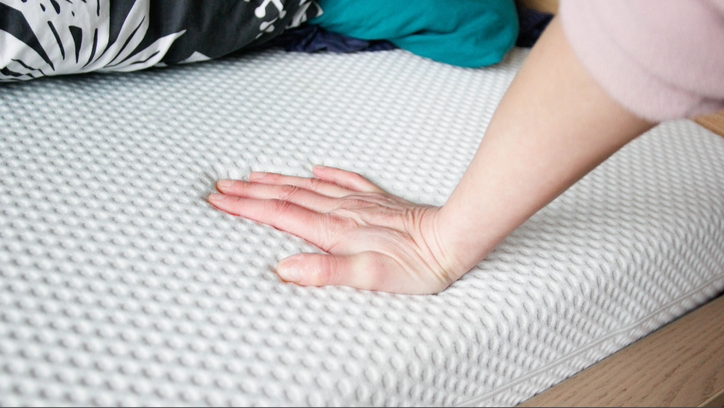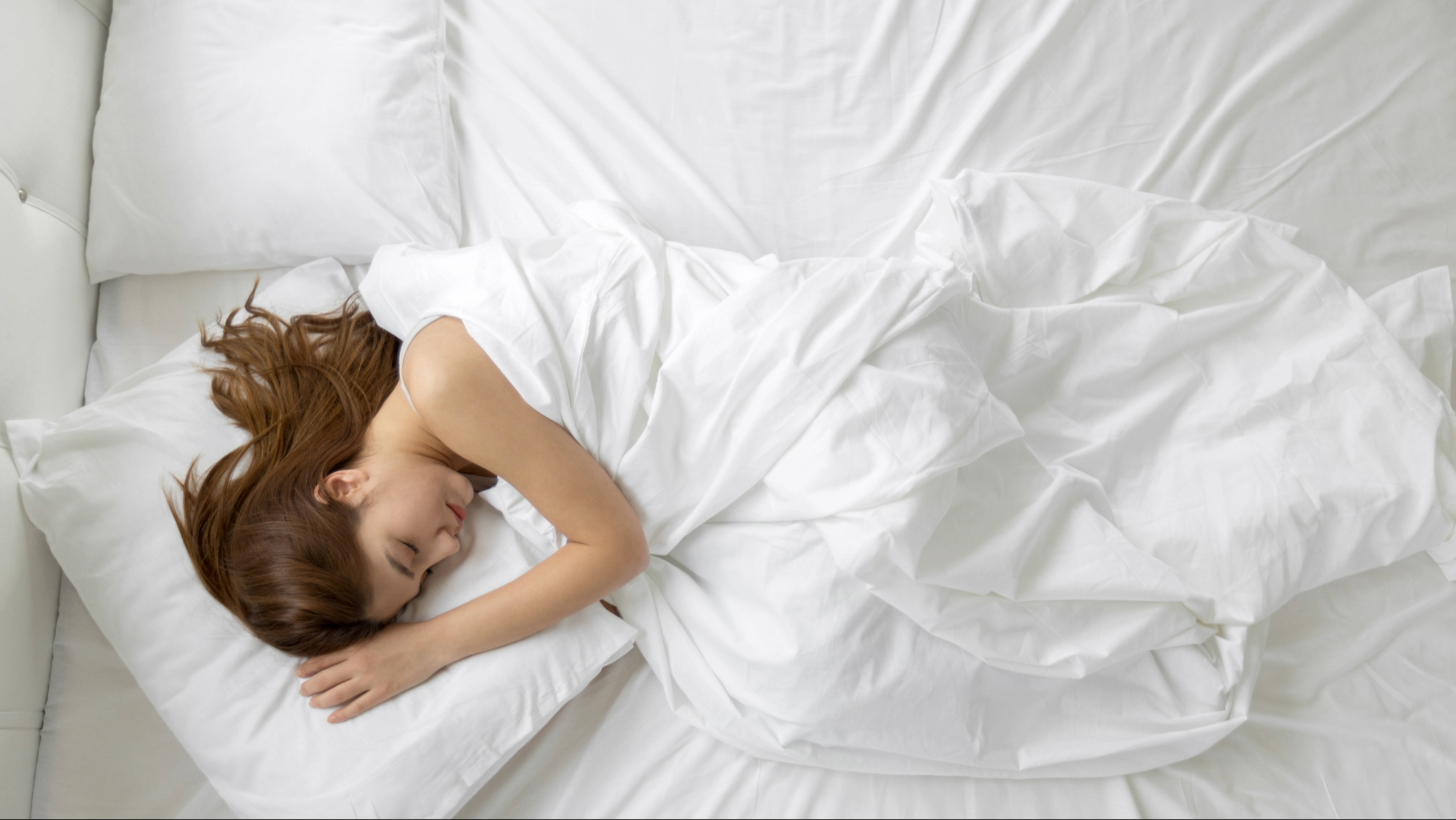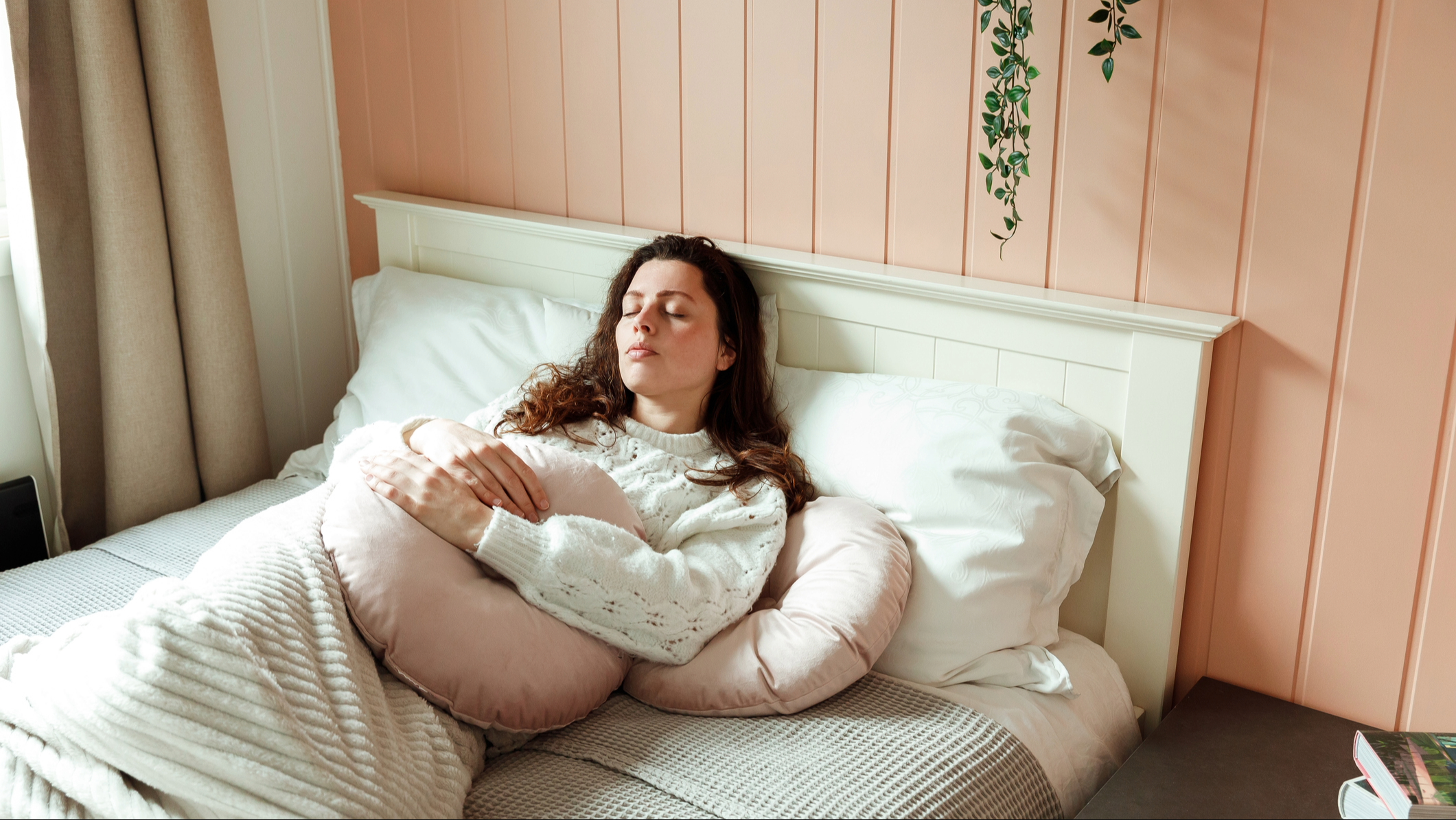4 reasons why your mattress could be sagging — and how to fix it
Sagging can inflict any mattress, old or new. Here’s how to fix it

Body impressions are common, particularly in old mattresses and softer mattresses with more plushness. However, a mattress with noticeable dipping and sagging after just one month is an issue.
No matter the quality of your new mattress, be it one of our top picks in this year’s best mattress guide or any other, sagging can be a problem — particularly if you don’t get a mattress suited to your sleep style and body weight.
Sure, you can expect your mattress to age with time – lumps, bumps and sagging are among the things that happen to your mattress after 10 years - but within one month? We’d expect a refund too. That said, there are valid reasons why your new mattress is sagging.
Here, we're looking deeper into these reasons and offering our best advice to fix it, plus how to prevent it in the future.
Why is a sagging mattress a problem?
In short, sagging mattresses are unsupportive mattresses. They can make it difficult to find a comfortable sleeping position which can disturb your sleep.
Nobody wants to toss and turn on a bumpy mattress when they should be enjoying quality sleep. At worst, sagging mattresses can cause uneven spinal alignment leading to back pain and body aches over time.
Why your new mattress is sagging after one month
Your mattress is molding to your body
Mattresses are primarily based on a support unit which is then topped with comfort layers. These comfort fibers will start to compress into the position of your body once you’ve slept on the bed for a while.
Get instant access to breaking news, the hottest reviews, great deals and helpful tips.
Initially, body impressions would be more visible as the mattress filling directly beneath the user are compressed. Hence why you might see dips and sags after one month of using a new mattress. This is known as mattress settlement – when the fillings of a mattress compress and mold to your body.
You weigh more than 250 pounds
Most mattresses can accommodate a weight of up to 250-pound per person. If your weight exceeds that, you may sink through the supportive layers of the mattress. As well as causing sagging, this is uncomfortable and can shorten the life of your mattress significantly. Instead, opt for a mattress specially engineered for heavy bodies. You can find our top picks in this year's guide to the best mattresses for heavy people.
Also note that your body weight will determine the firmness level you need in a mattress. For optimum support and pressure relief, lighter bodies need softer mattresses, while heavier bodies need firmer ones. If your mattress is too soft, it may sag.
Your foundation is faulty

Even the best luxury mattresses are only as good as their foundation and if yours is faulty, it could cause a new mattress to sag.
Raised foundations with fewer than six legs often cause premature sagging as there is less support around the center of the mattress. Similarly, foundations with slats can cause sagging issues in the areas that fall between the support of the slats.
The type of foundation best suited to your new mattress depends on various factors. So, it is best to check your manufacturer’s advice on the foundation style you should be using to get the most out of your mattress. It is also worth noting that ignoring their foundation advice can impact your warranty.
It hadn’t fully expanded when you began sleeping on it
For a mattress in a box, it’s important to wait the specified expansion time before sleeping on it to prevent incurring damage that could drastically shorten its lifespan and void your warranty.
The time it takes for a mattress to expand from its packaged form to a supportive sleep surface depends on the type of mattress it is and the manufacturer it comes from.
But most companies will recommend leaving your mattress to expand for at least 24 hours before sleeping on it. It might look like your mattress is fully expanded an hour or so after unboxing, but you will be surprised how much more it expands after the recommended 24 to 72 hours.
How to fix a new mattress that is sagging?

Rotate the mattress
Rotating your mattress top to bottom is a quick fix that can help prevent sagging. Redistributing weight across your sleep surface prevents pressure from building up in certain areas of the mattress, avoiding lumps and bumps from forming.
Sleep in different places on the bed

Similarly, you and your partner’s strict boundaries over which side of the bed you sleep on could be causing your mattress to sag. The heavier body will be putting more pressure on one side of the bed.
Try changing up your sleeping arrangement every so often to redistribute weight. If you're a solo sleeper, lucky enough to take your pick of where you sleep on the bed, make sure to sleep in different places occasionally.
Replace the foundation
As mentioned above, a suitable mattress foundation is vital to prevent sagging. Generally, metallic bed frames tend to be more sturdy and durable than wood ones, helping to prevent your mattress from sagging.
Wooden bed frames deteriorate quicker as the wooden slats can droop under the weight of the mattress and your body, causing the mattress to sag. Whereas metal is a stronger material, providing additional support to the mattress and extending its lifespan.
As a quick fix for sagging caused by bed frame slats, you can place plywood between the mattress and bed frame. This provides an even surface. Resting on the plywood, your mattress should return to its original position in a few days or weeks.
Check the warranty
If your mattress is sagging beyond initial body impressions, causing you uncomfortable, disturbed sleep, it is worth exploring the terms of your manufacturer’s warranty coverage.
If there has been damage caused by a covered reason, you may be entitled to repair or replacement. If you can't find a specific cause, speak to the company and voice your concerns.
Use extra pillows

You can use extra pillows to help provide support where it is needed most – generally the hips, back or legs. Therefore, pillows with good shape retention are best.
We do not recommend this method as a long term solution. It should only be used as a temporary measure to counter mattress sagging until you’re able to replace your sagging mattress.
Consider a mattress topper
Mattress toppers can prolong your mattress’ lifespan, offering both protection and enhanced comfort. The best mattress toppers help reduce the effects of a sagging mattress by providing a more even, comfortable and supportive sleep surface.
Admittedly, a mattress topper won’t fix a sagging mattress. However, they are an affordable, temporary measure for folks not yet ready to purchase a new mattress, but looking to improve the comfort of their existing bed.
Tempur-Pedic Tempur-Cloud Topper
Was from: $229
Now from: $137
Saving: Up to $123 at Tempur-Pedic
Mattress topper summary: This mattress topper by Tempur-Pedic features a high-stretch knit cover, designed to be breathable and moisture wicking to help sleepers regulate their temperature at night and keep their mattress fresher for longer. The material is durable and dust mite and allergen resistant, offering another layer of protection, and the removable cover makes it easy to care for and clean. The signature Tempur-material is 2" thick and has excellent pressure relieving power, meaning no matter your sleeping position, your body will be supported and cradled. With 40% off, a queen size is currently $155.40 (was $259), and this is the best price you’ll find this topper discounted to. It’s important to note that Tempur-Pedic does not accept returns on their mattress toppers.
Benefits: Free speedy shipping | 10-year warranty
Price history: Tempur-Pedic often offers discounts on its mattress toppers, especially around big holidays or events like Labor Day or Black Friday. However, the Tempur-Cloud Topper usually sees a 30% discount, so this current 40% off deal is the best discount you’ll get. We’re unsure when this sale ends and it’s well worth taking advantage of, so we’d recommend acting quickly.

Eve is a sleep tech product tester and writer at Tom's Guide, covering everything from smart beds and sleep trackers, to sleep earbuds and sunrise alarm clocks. Eve is a PPA-accredited journalist with an MA in Magazine Journalism, and has four years’ experience writing features and news. In her role as Sleep Tech Product Tester and Writer for Tom's Guide, Eve is constantly trying out and reviewing the latest sleep products from brands such as Apple, Garmin, Whoop, Hatch, Sleep Number, Eight Sleep, and Oura. A fitness enthusiast who completed the London Marathon earlier this year, Eve loves exploring the relationship between good sleep, overall health, and physical performance, and how great sleep tech can make that relationship even better.

